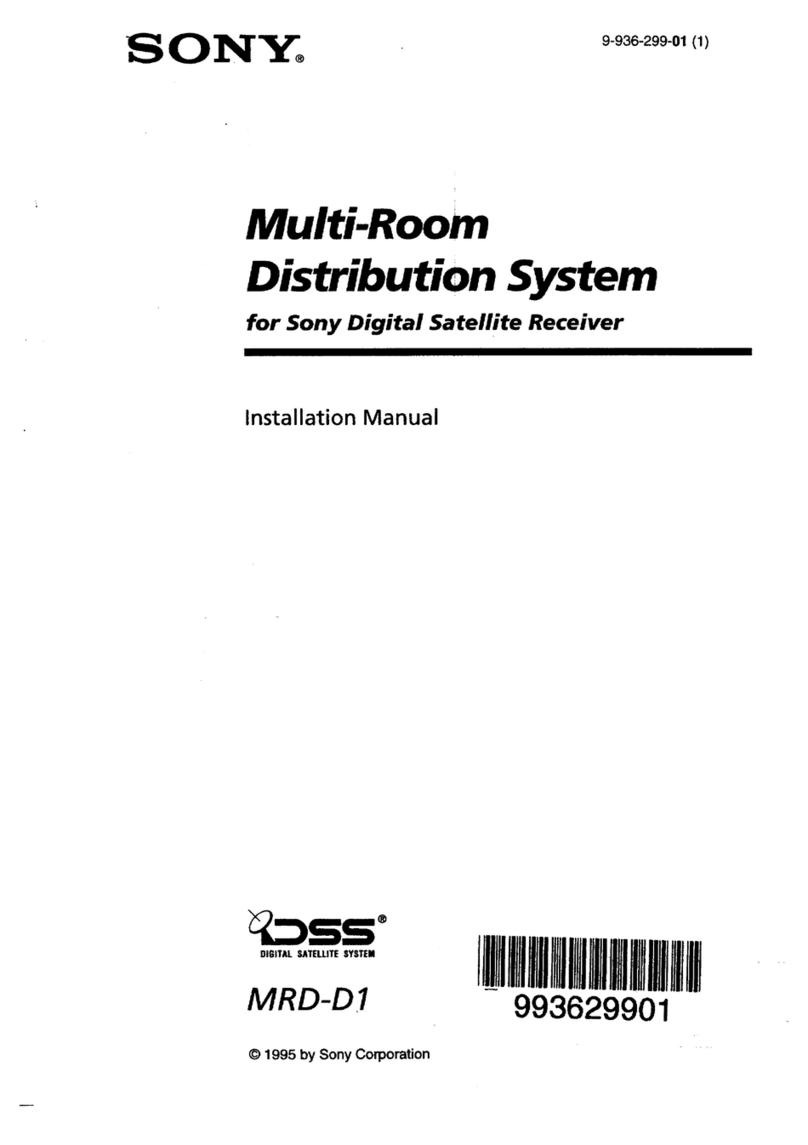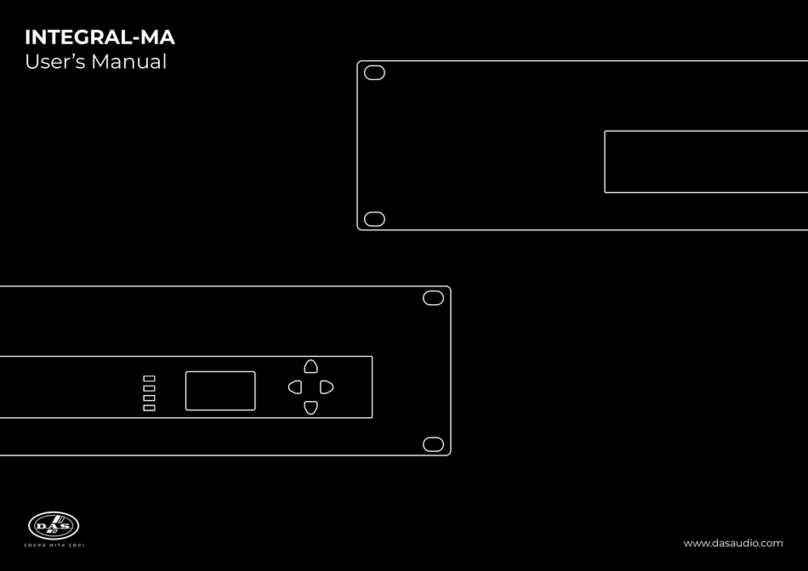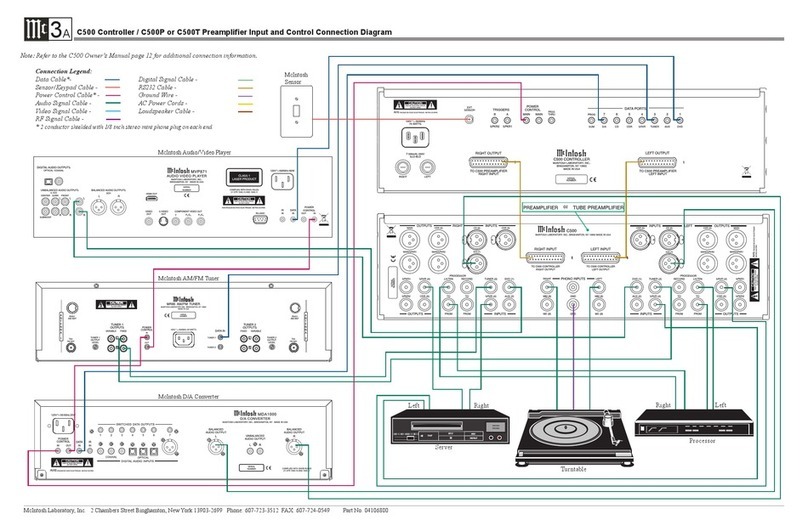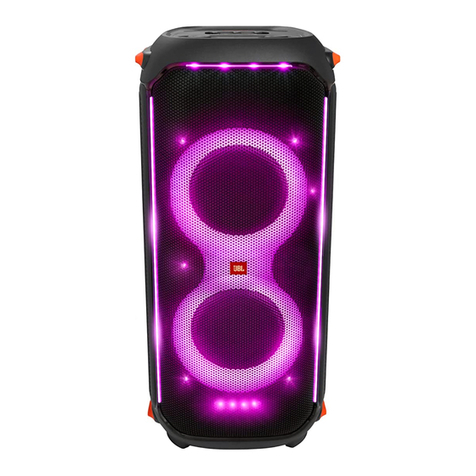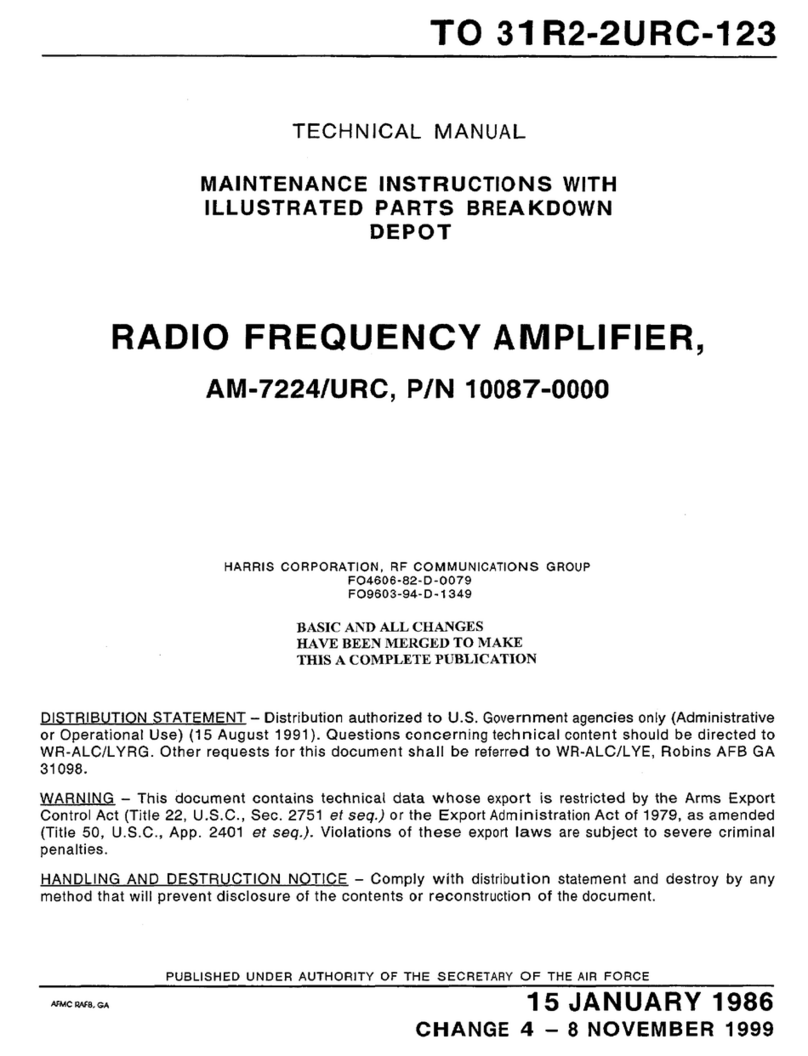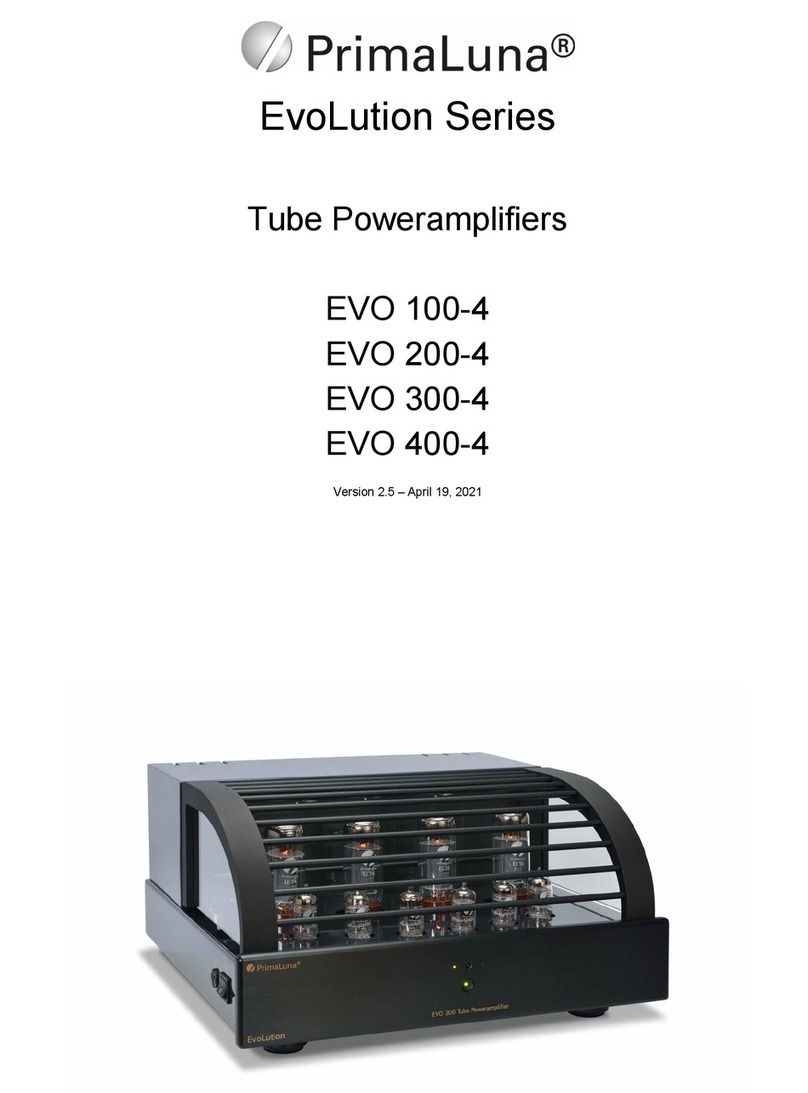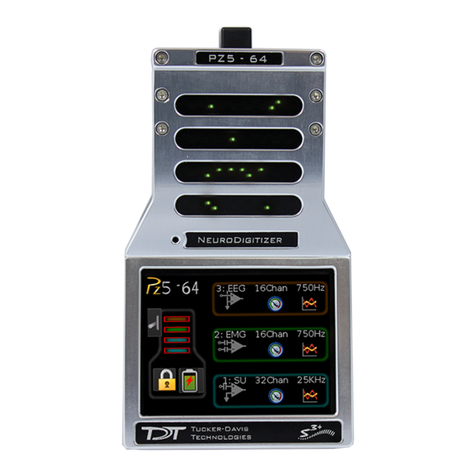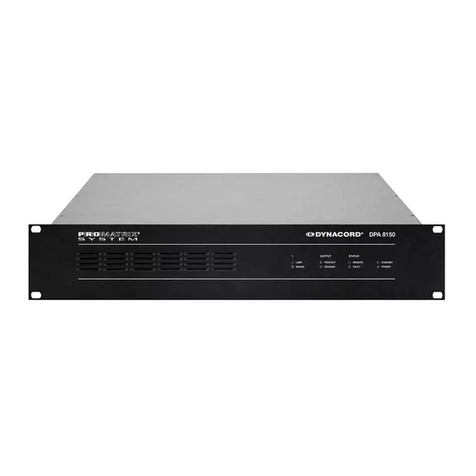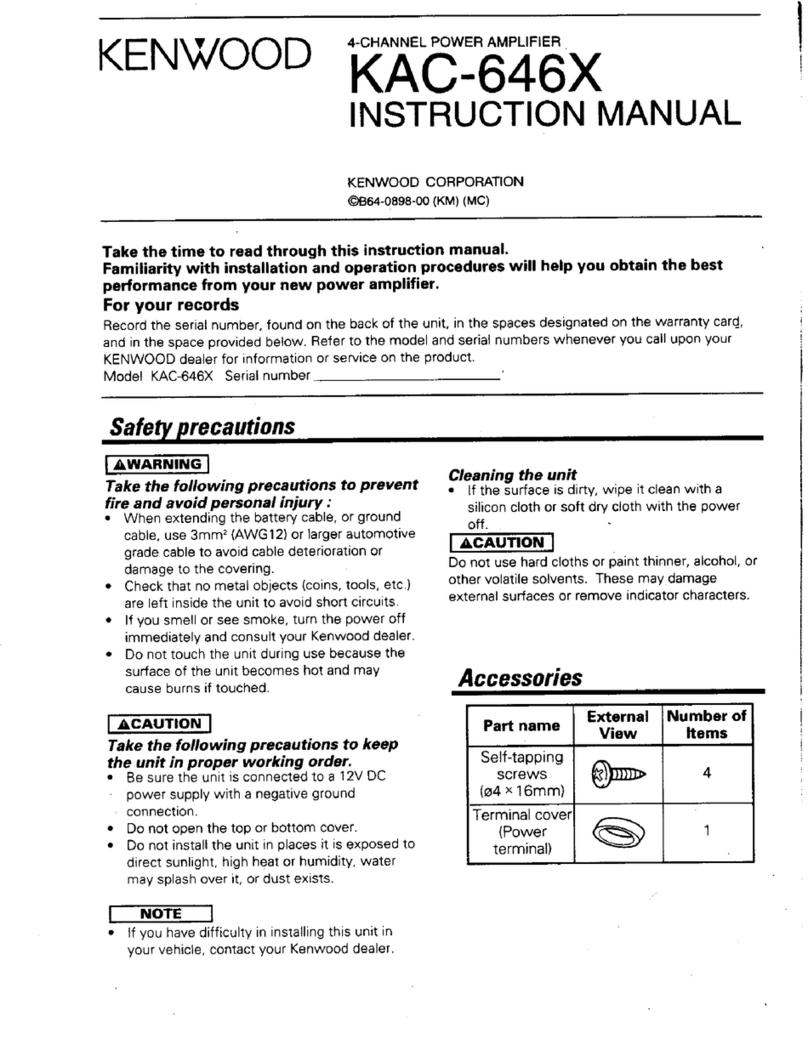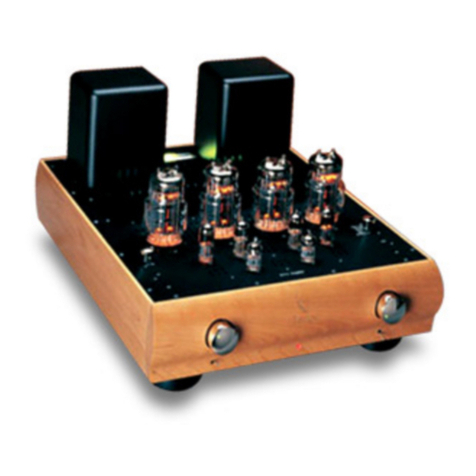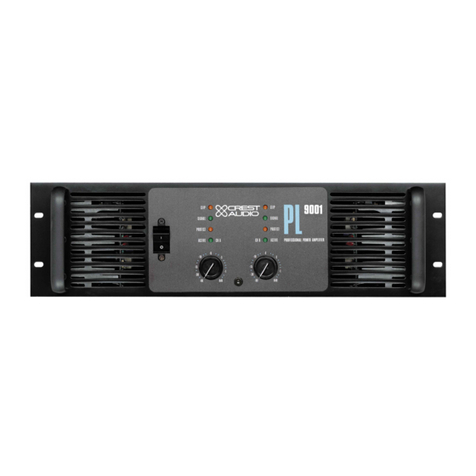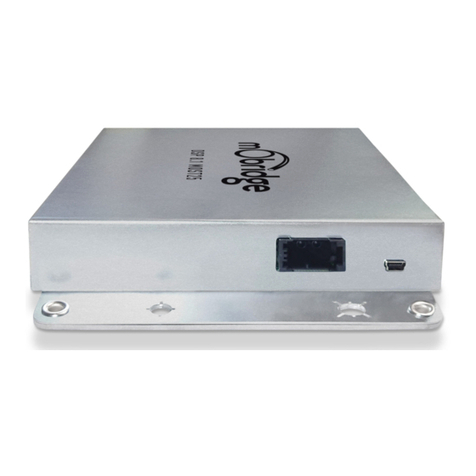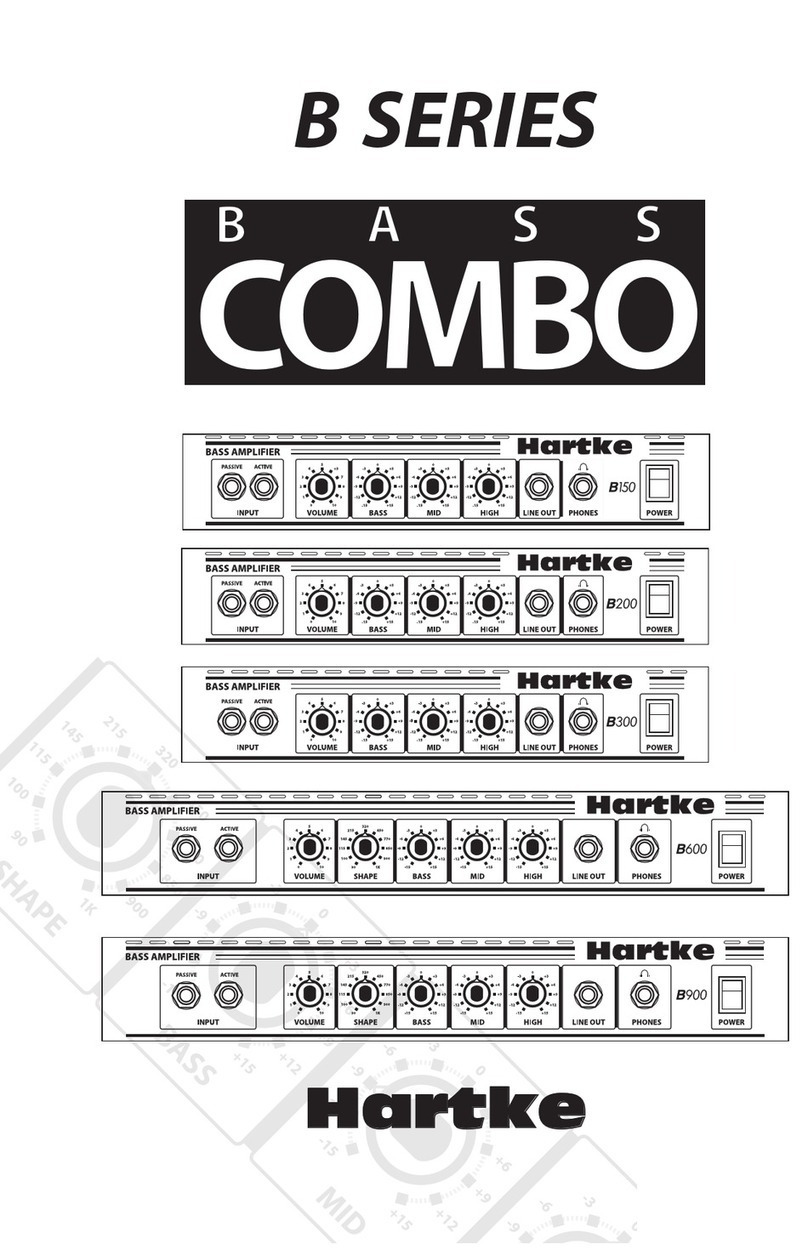Linnenberg BIZET User manual

Owner’s Manual
BIZET

2

3
For quite a number of people, the use of vinyl or
phono playback has been and still is the
predominant source in their music collection.
This reflects both the inherent properties and
character of the analog sound, and the fact that
the reproduction of records has improved
considerably in recent times, which is due to the
increasing competition from high-resolution
digital sources.
Thank yo
u for
purchasing
the
BIZET !

4
BI ET serves this goal by using a fully balanced
circuit that suppresses noise and keeps the
sensitive signal of a phono cartridge in
balanced mode, maintains balanced operation
continuously, and eliminates noise that would
otherwise obscure critical music information.
Basic operation
Room temperatures over 30 degrees Celsius
and / or extreme humidity should be
avoided. Keep away from heat sources like
radiators, heating, ovens or similar
appliances dissipating heat. It is important to
maintain an adequate supply of airflow to
prevent overheating.
!
Place the unit on a solid, flat level surface such
as a shelf where it is convenient to operate.
Before connecting the BI ET to your mains
the first time, check if the indicated mains
voltage is in accordance with your home
supply. Never plug an 115V version in a
230V mains socket or serious damage will
occur.
!

5
There is no need to operate the mains ON / OFF
switch on the back side of the BI ET since the
standby power consumption is less than 0,5W.
As it is common practice, disconnect BI ET from
the mains during a thunderstorm or when going
on vacation.
Once the power cord is connected, the red
indicator LED should light up and blink when the
power switch and subsequently the front panel
push button are operated. Turn off the unit by
pushing the front button again and do the
signal connections. If everything is connected,
turn on again and have fun!
Connections

6
Connecting the Analog Output
Connect the left and right interconnect cables
from the BI ET's outputs to your preamplifier left
and right inputs. To maintain best sound quality,
it is strongly recommended that balanced
audio connections to be used.
Connecting a Turntable
Turntable Connection Types
For start listening, you only need to connect a
turntable to the BI ET as you would do to any
other phono preamplifier. Nevertheless, please
take note of the following: BI ET can be
connected to many different types of turntables.
To fully realize the sonic potential, use balanced
cable connections with XLR terminations
whenever possible. Balanced XLR cables
minimize interference from magnetic, hum, and
RF sources.
Because a phono cartridge is actually a true
balanced source, a balanced input is provided.
Connect the output cables from your turntable
to the left and right channel XLR input. Do not
short pin 1 (chassis/ground) to either pin 2 or 3 of
the XLR connector at any point in the cable,
turntable chassis, or tonearm. This will cause
hum in the system. Pins 2 and 3 must only be
connected directly to the cartridge pins. If your
turntable does not have XLR connections, use
the Cinch (RCA) input instead.

7
Gain Selection Adjustment
The middle switch on the back site can be set to
either low, mid or high gain (+10 dB). This switch
is used to raise the overall gain of the input for
lower output cartridges. When using cartridges
with very low output (less than 0.2 mV), it is
recommended that the high gain setting is
used. In all other cases the 0dB or +5dB setting
will sound the best.
Cartridge Loading Adjustment
Set the resistive load switch to 100Ω, 500Ω, or
845Ω, depending on manufacturer’s
recommendations or listening. Any value
between zero and 845Ω can be accomplished
by using a parallel cinch impedance jack.
Please ask your dealer for help if needed.
Daisy chain mode
BI ET operates one tonearm / cartridge
combination. However, if you want to use
multiple sources, you can operate a second
(third ...) BI ET in a daisy chain mode. The signal
from the currently activated BI ET is transmitted
to the line stage without the need for input
switching. Doing so, you need to engage the
daisy chain switch and connect the preceding
outputs from another BI ET (or any other line
source) to the daisy chain input. If daisy chaining
is not used, use the upper position of the switch
(off).

8
BI ET mains voltage selection / fuse
replacement
The following work should only be carried
out by a qualified technician in accordance
to highest electrical safety standards. Risk of
electric shock. !
Replacing the fuse
The fuse must be replaced by a 0.63AT type
(5x20mm). Never attempt to short the fuse
holder. Normally the fuse should never blow – if
it has, it is a sign of a serious fault condition.
Further investigation is needed.
Mains voltage
Altering the mains input voltage range from
115V to 230V or vice versa is done by changing
the fuses. You will need 1x 0,63AT for 230 V
operation and 2x 0,63AT for 115V operation.
Never attempt to apply any other fuse
configuration or a short circuit condition will
occur.

9
Specifications
Gain 66 – 71 – 76dB (sym.
input -> sym. output)
Common mode
rejection ratio (CMRR)
90dB
Noise (input referred) : 43nV BW: 400Hz …
30kHz flat
Input impedance : 100 – 500 – 845 Ohms
Frequency response : RIAA equalization:
20 … 20kHz +/- 0.5dB
Distortion and noise : <0.005%
Crosstalk : 100dB
Max . output level : 20V rms balanced
Output impedance : 35 Ohm per phase
Power consumption : 16W, < 0.5W turned off
Dimensions (H x W x D) : 75 x 432 x 290 mm

10
CE declaration of conformity
Product Type: Phono preamplifier
Model: BI ET
Linnenberg-Elektronik declares that this product
complies with the Low Voltage Directive
2014/35/EU and the Electromagnetic
Compatibility Directive 2014/30/EU as well as the
Ecodesign Directive 2009/125/EC.
The unit meets all currently valid regulations only
in its original condition. The original, unaltered
factory serial number must be present on the
outside of the unit and must be clearly legible!
The serial number is an essential part of our
conformity declaration and therefore of the
approval for operation of the BI ET. The serial
numbers on the unit and in manual, must not
be removed or modified, and must correspond.
Furthermore, the unit has been found to comply
with the limits for a Class B digital device,
pursuant to Part 15, subpart B (unintentional
radiators) of the FCC rules.
LINNENBERG – ELEKTRONIK
Germany
Phone: +49/178/7672984
Mail: info @ linnenberg-audio.de
© Linnenberg Elektronik 2020
Other Linnenberg Amplifier manuals
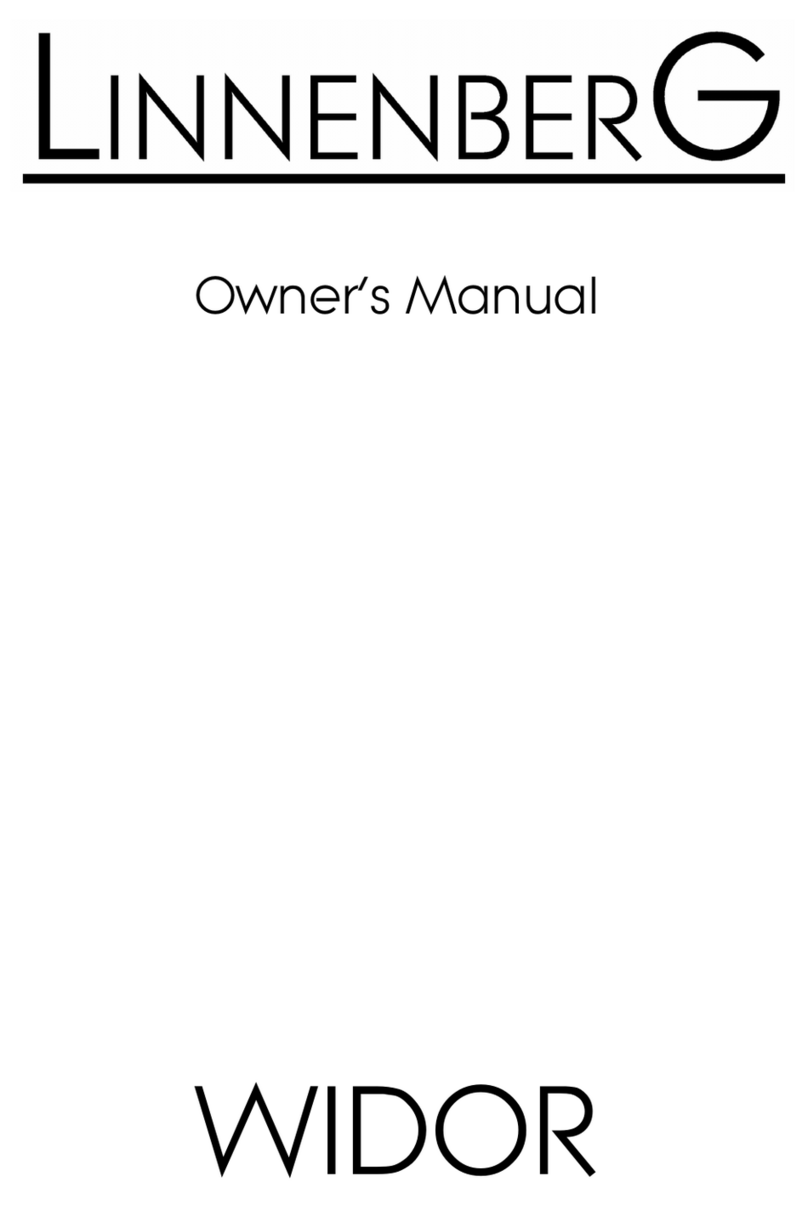
Linnenberg
Linnenberg WIDOR User manual

Linnenberg
Linnenberg HÄNDEL User manual
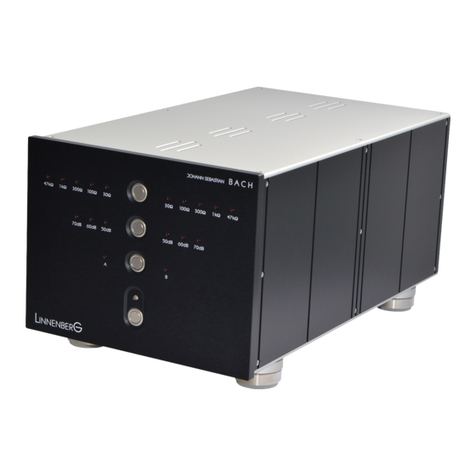
Linnenberg
Linnenberg JOHANN SEBASTIAN BACH User manual

Linnenberg
Linnenberg JOHANN SEBASTIAN BACH User manual
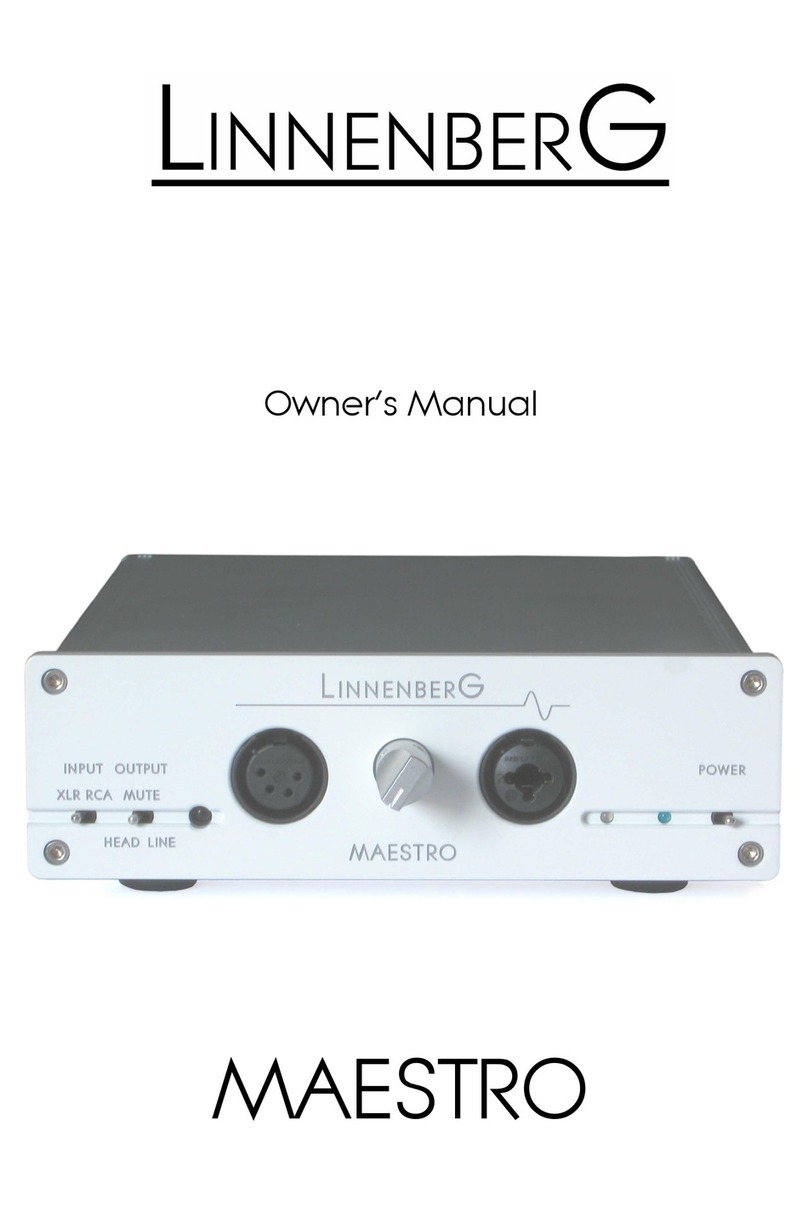
Linnenberg
Linnenberg MAESTRO User manual

Linnenberg
Linnenberg G.P. TELEMANN User manual

Linnenberg
Linnenberg ALLEGRO User manual
